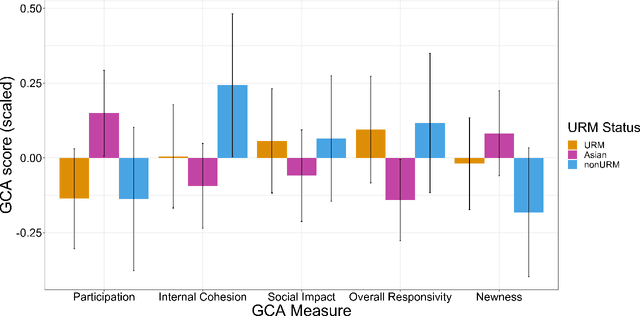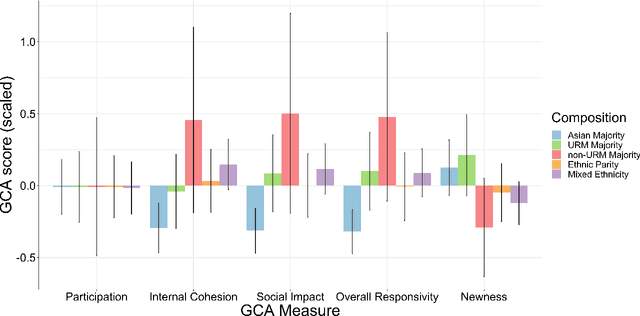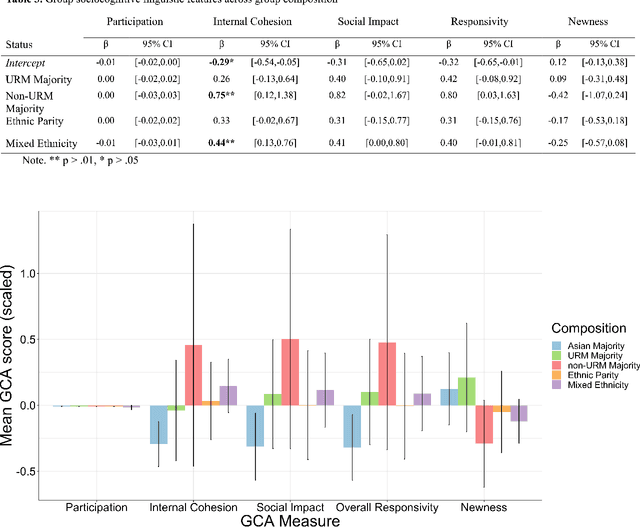Nia Nixon
The AI Collaborator: Bridging Human-AI Interaction in Educational and Professional Settings
May 16, 2024Abstract:AI Collaborator, powered by OpenAI's GPT-4, is a groundbreaking tool designed for human-AI collaboration research. Its standout feature is the ability for researchers to create customized AI personas for diverse experimental setups using a user-friendly interface. This functionality is essential for simulating various interpersonal dynamics in team settings. AI Collaborator excels in mimicking different team behaviors, enabled by its advanced memory system and a sophisticated personality framework. Researchers can tailor AI personas along a spectrum from dominant to cooperative, enhancing the study of their impact on team processes. The tool's modular design facilitates integration with digital platforms like Slack, making it versatile for various research scenarios. AI Collaborator is thus a crucial resource for exploring human-AI team dynamics more profoundly.
Greater than the sum of its parts: The role of minority and majority status in collaborative problem-solving communication
Mar 07, 2024


Abstract:Collaborative problem-solving (CPS) is a vital skill used both in the workplace and in educational environments. CPS is useful in tackling increasingly complex global, economic, and political issues and is considered a central 21st century skill. The increasingly connected global community presents a fruitful opportunity for creative and collaborative problem-solving interactions and solutions that involve diverse perspectives. Unfortunately, women and underrepresented minorities (URMs) often face obstacles during collaborative interactions that hinder their key participation in these problem-solving conversations. Here, we explored the communication patterns of minority and non-minority individuals working together in a CPS task. Group Communication Analysis (GCA), a temporally-sensitive computational linguistic tool, was used to examine how URM status impacts individuals' sociocognitive linguistic patterns. Results show differences across racial/ethnic groups in key sociocognitive features that indicate fruitful collaborative interactions. We also investigated how the groups' racial/ethnic composition impacts both individual and group communication patterns. In general, individuals in more demographically diverse groups displayed more productive communication behaviors than individuals who were in majority-dominated groups. We discuss the implications of individual and group diversity on communication patterns that emerge during CPS and how these patterns can impact collaborative outcomes.
Catalyzing Equity in STEM Teams: Harnessing Generative AI for Inclusion and Diversity
Jan 08, 2024Abstract:Collaboration is key to STEM, where multidisciplinary team research can solve complex problems. However, inequality in STEM fields hinders their full potential, due to persistent psychological barriers in underrepresented students' experience. This paper documents teamwork in STEM and explores the transformative potential of computational modeling and generative AI in promoting STEM-team diversity and inclusion. Leveraging generative AI, this paper outlines two primary areas for advancing diversity, equity, and inclusion. First, formalizing collaboration assessment with inclusive analytics can capture fine-grained learner behavior. Second, adaptive, personalized AI systems can support diversity and inclusion in STEM teams. Four policy recommendations highlight AI's capacity: formalized collaborative skill assessment, inclusive analytics, funding for socio-cognitive research, human-AI teaming for inclusion training. Researchers, educators, policymakers can build an equitable STEM ecosystem. This roadmap advances AI-enhanced collaboration, offering a vision for the future of STEM where diverse voices are actively encouraged and heard within collaborative scientific endeavors.
 Add to Chrome
Add to Chrome Add to Firefox
Add to Firefox Add to Edge
Add to Edge